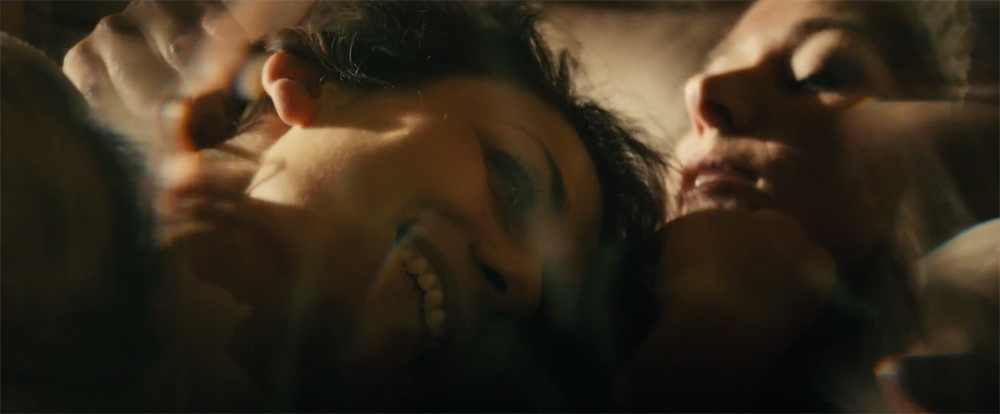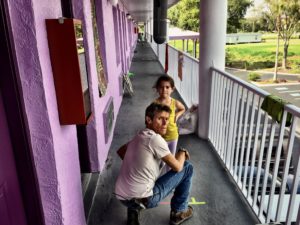
Peter Strickland’s The Duke of Burgundy has left a rather large impact on me. While I never reviewed the film, my Letterboxd review upon rewatch says plenty about my feelings for the film. More importantly, I had a chance to explore some of those feelings with the filmmaker himself in an article recently published on the Miami New Times. But there was so much more to say when it came to Strickland’s approach to the fascinating tale of sadomasochism and domesticity between two women. So read on, both those who have experienced this delectable work of art, and those who have yet to enjoy the pleasures that lay within (you’re safe from spoilers here).
—
JB: Your film has a certain aesthetic about it – very polished, very classic, very seventies frankly. Did you specifically try to evoke a certain period of cinema with your film (much like giallo with Berberian Sound Studio), and in this case – with the film seemingly being inspired by filmmakers like Buñuel, Fassbinder, Metzger, and Brakhage – what were the primary influences in both style and storytelling?
PS: The film certainly springs from a kind of decadent, opulent cinema that ranged from Visconti to some of the more disreputable proponents of sexploitation such as Metzger and Franco. However, all of these are starting points or just window dressing for what is at heart a domestic drama. I tried this drama in different settings, but it seemed to work most effectively when pitted against a preposterous, fairy-tale background. Many tales of sadomasochism show that activity as something unusual in the regular world, but how about we show that activity as normal in a very unusual world instead? Morgiana by Juraj Herz was a strong influence with its camp Gothic fairy tale trappings, but I tried to find my own way with the actual tone, which took time. Trying not to be too serious, but not too ironic either. I didn’t want to laugh at the characters, but found a way to laugh at the pragmatics of it all. That had to come from within. However, there are various shots that do mirror other films. We took that method Franco had of having his actors face the camera, even though they were not addressing it. I find it really strange and direct, so we tried that a few times and I was really happy with how it worked out.
JB: The symbolism of the moths and butterflies, especially with lepidopterology being such a prevalent interest to the women in the film, really brings together the way love and death go hand in hand. Which really leads me to ask about the way you intertwine these very abstract sequences, especially with all that Brakhage influence, into the film as an emphasis of their codependent romance.
PS: It’s hard to do that without it feeling either like a gimmick or hammering a metaphor in. The Lepidoptera were there as a backdrop that accentuated both the sensual, tactile aspects of the film, but also its surreal air. If one considers the writings of Jean-Henri Fabre, this film is not so unusual in that context of an aesthetic rather than scientific appreciation of insects. The Brakhage tribute is the most obvious ‘lift’ I’ve attempted. Part of me wants to turn an audience on to Brakhage and the US avant-garde from the ‘50s to the ‘70s and I’m very open about that, but it’s also trying to put Mothlight in a different context and use that imagery and intensity dramatically to convey the anguish of a character. We achieved it in a manner, which Brakhage would’ve been appalled by, since the moths were made digitally and we used sound. But that’s OK. I’m just trying to do something different with that influence and other influences. Working with these influences is tantamount to a collage, which is essentially what this film is. However, I love so much of that cinema from the US – Brakhage, Kenneth Anger, the Whitney Brothers, Tony Conrad, Paul Sharits, Jack Smith and my favourite, Jordan Belson.
JB: Quite contrary to Berberian – where everything is essentially inside a man’s mind – Duke of Burgundy is very much a woman’s world, both in getting inside the psyche of these women and in the fact that there are only women. Was there any commentary intended about a world without men?
PS: Not really. We just didn’t need men for this film. I didn’t want to get into gender, which definitely corrupts the power dynamic. If you make it homogenous in terms of gender, you can avoid all that. It was important to have a concentrated subject for this film and not let it play out in the real world. I thought about having all men, but I’m saving that for something else.
JB: In hand with that, why the decision to make the only two careers depicted in the film that of entomologist and saleswoman? Scientists and carpenters or salespeople who make house calls are typically shown as male professions on screen, so was it also part of intentionally subverting those known images?
PS: It was more naïve than what you suggest. I made a decision to go with an all-female world and didn’t want to go back on that. If the story required a bondage carpenter, so be it, we had to have a woman. However, her character is completely preposterous – to dress so glamorously for such a dusty job, eye up her clients inappropriately and give away details of neighbours making what they thought were discreet purchases. She’s a disgrace, but I love her. As for entomologists, there is an Orthopterist called Judith Marshall, who is highly respected internationally. I should stress that this film is not based on her.
JB: One of my favorite things about your films, and something you’re praised for often, is the attention to detail in sound design. Berberian was all about the way these sounds come about, but with both Katalin Varga and Duke, the mixing of the worlds sounds and the score blend and separate almost seamlessly. Why do you choose to include all these diegetic sounds rather than remove them like other contemporary filmmakers do? Is it to provide something to ground the film in reality while your scores create this very dreamy, romantic, and often haunting, atmosphere?
PS: A sonic anchor or reality was needed in Berberian in counterpoint to the elliptical narrative. To root the whole film in diegetic sound and music was also a way of provoking the audience into questioning the very nature of a film sound mix and soundtrack. We tried to be precise regarding perspective and let sound reveal its reality in terms of EQ/frequency when it’s coming from the mouth, speakers, headphones, etc.
The sound was mixed to sound like a non-diegetic film, but as bombastic as everything sounded, it was mostly realistic, bar the odd cheat with subjectivity. We could get away with it, as characters working on a horror film would be making bombastic sounds anyway.
With The Duke, we didn’t wish to draw attention to ourselves with the sound. Martin Pavey (the sound designer/mixer) and I spent a lot of time weeding out sounds to make the audio as barren as possible. Just by the absence of neighbouring sounds, simple sounds you’d otherwise ignore tend to stand out. Our aim this time wasn’t so much to be realistic. It was more to do with having a sensual, austere sound mix and to let everything breathe and exist without using a rack of effects. It was very important for the insect sounds to be presented in situ.
JB: As erotic as it sometimes is, nothing you show in the film ever comes off as exploitative. Were you ever worried that you could fall into that territory as a male filmmaker focusing his lens on a queer female relationship?
PS: Absolutely. If it were two men, I’d feel much freer to be explicit. However, I wouldn’t class the relationship in this film as queer in the classic social sense since there is no gender counterpoint. It’s certainly not heterosexual either. It’s hard for me to ‘locate’ this film in that regard. The film is screening at a big LGBT festival soon and I’m very curious as to how it will be interpreted. Obviously I hope it goes down well, but that’s clearly for the audience there to decide.
But going back to exploitation; even though this film comes out of that genre, there was no point just copying what had been done before. It felt more interesting to try a softer version of soft porn, but also a more disappointing version too. I’m trying to do all the things you were not supposed to do in that genre – take the ideal of the dominant ice queen and undermine that by showing her snoring in bed and so on. In general, I wanted to explore the gulf between fantasy and the practicalities involved in enacting it, which ultimately lead to disappointment. The aim was never to get straight men off with this film.
—
The Duke of Burgundy is currently experiencing a limited theatrical release. In Miami, it played at O Cinema Wynwood and is playing at Miami Beach Cinematheque on March 18th & 19th.



 Derek
Derek
 Isabelle
Isabelle